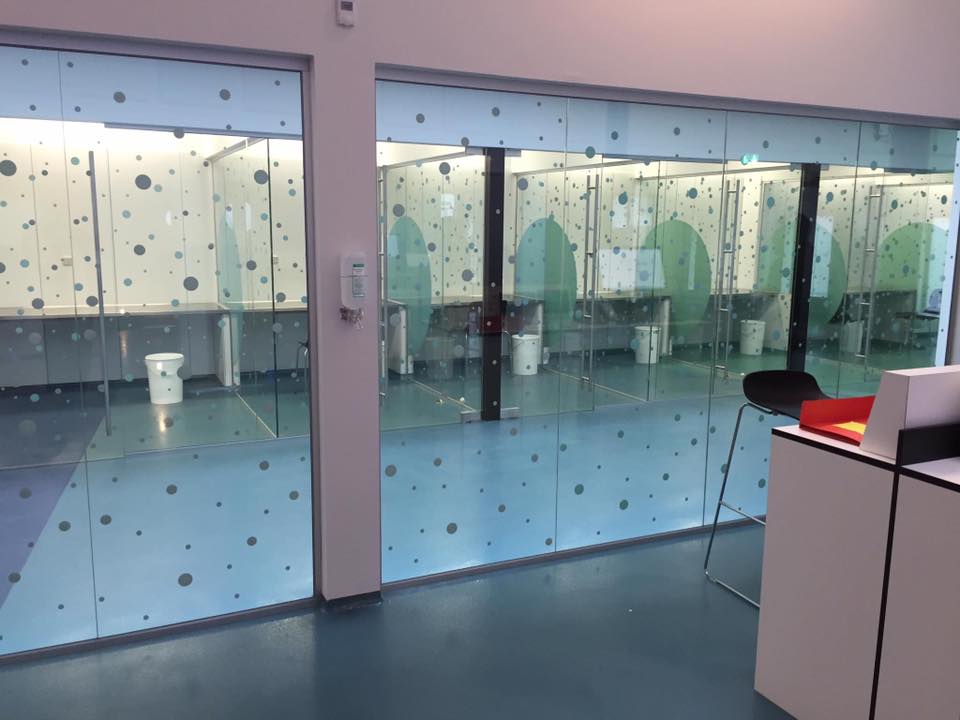The creation of a drug consumption room (DCR) in Glasgow, and the expansion of heroin-assisted treatment (HAT), can reduce the harms of drug use and save the city money in the long-term, according to the UK’s largest health board.
In October 2016, a multi-agency committee – including health officials and police – tentatively approved the creation of a DCR in Glasgow. DCRs are life-saving initiatives that allow people who use drugs to do so in safe environments with sterile equipment, and in the company of medical professionals. The facility is expected to have up to 12 individual injecting booths, and may include a “small drug inhalation room”.
If the facility does not include an inhalation room, it may be more commonly referred to as a safe/supervised injection facility (SIF) rather than a DCR.
Free and accessible sterile equipment and safe spaces for injecting drug use are urgently-needed harm reduction initiatives for Glasgow as there has been a recent steep rise in HIV cases among people who inject drugs in the city, according to NHS Greater Glasgow and Clyde (NHSGGC).
DCRs have been in operation in parts of mainland Europe for over 30 years, but Glasgow’s is set to be the UK's first such facility. There is not one recorded instance of anyone dying from a drug overdose in a DCR.
As part of these harm reduction plans, a new heroin-assisted treatment (HAT) service is also set to be established alongside the DCR. HAT involves providing pharmaceutical-grade heroin to people who have found alternative methods for treating their drug dependency to be ineffective. This would reduce the risk of people using, or overdosing on, contaminated drugs, and allows individuals to avoid the potential dangers of entering the illegal market to make a purchase.
On 9 June, NHSGGC published further detail on the city’s plans, including an estimated valuation of the programme’s cost. The “total operation costs” of the DCR and new HAT service, the update estimates, will be around £2.3m annually.

Individual rooms for drug use in a Copenhagen DCR. Will Glasgow's look like this? (Source: Nanna W. Gotfredsen)
Following NHSGGC’s report, BBC News ran an article titled “'Fix rooms' for addicts in Glasgow to cost more than £2.3m a year”. The crudely-titled piece does little to allay grievances that the public may have around an already-stigmatised subject, but more importantly, the article is patently false; the £2.3m figure covers the total operational costs of the DCR and HAT services, not simply “fix rooms”. The figure also does not take into account the money that can be saved by providing such services.
The controversy that such stigmatisation and misreporting causes can be seen in the comment section of countless online articles that discuss this issue. Commenters on a recent GlasgowLive piece, for example, denounced the initiative as “an absolute disgrace” and decried the NHS for supposedly "[having] money to build a haven for junkies".
Despite such negative reactionary responses, the introduction of a DCR and new HAT service can actually save the city money if enough people use them.
According to the 2009 report Assessing the Scale and Impact of Illicit Drug Markets in Scotland, published by the Scottish government, a “problem drug user” in Scotland costs taxpayers an average of £31,438. Based on this figure, NHSGCC posit, the introduction of a new HAT service could save over £940,000 of public money by providing care for just 30 people who successfully engage with treatment.
Considering there are an estimated 500 people who publicly inject drugs in Glasgow, the amount of money saved could thus rise far beyond £940,000 if the planned HAT service was widely and successfully engaged with.
Additionally, the report describes, money could be saved because people with problematic drug use are less likely to commit other crimes if they are in treatment. Based on the report, “problem drug users not in treatment” have an annual average criminal justice cost of £12,713, compared to £1,536 for those who have been in treatment for over a year.
Susanne Millar of the Glasgow Health and Social Care Partnership says that evidence is on the side of those who back such harm reduction measures.
“These proposals are backed by evidence indicating [DCRs] not only improve health outcomes for people who inject drugs, but are also highly cost effective and contribute to savings for health and social care services,” she said.
As TalkingDrugs reported in November, there are a multitude of other ways in which DCRs can improve public health and safety, even for people who don’t use drugs.
A DCR would considerably reduce the number of used needles being dangerously discarded on the streets of Glasgow, time will be freed up for over-stretched health and police services to focus on serious emergencies, and – perhaps most importantly – DCRs can help marginalised people reintegrate themselves into society by engaging with services, thus strengthening society as a whole.
While the law already allows for HAT provisions, the concept of a DCR is currently legally untenable, as the possession of street-purchased heroin is illegal under the Misuse of Drugs Act 1971. NHSGGC say that “work is on-going in relation to securing an exemption from the Lord Advocate” – the chief public prosecutor in Scotland.
A report proposing a specific site for the DCR, as well as more concrete spending figures, will be submitted by the NHSGGC to the Glasgow City Integration Joint Board on 21 June. After this point, the timeline of the DCR and HAT implementation will become clearer.


